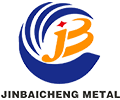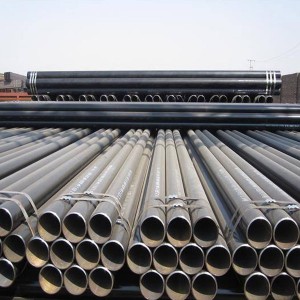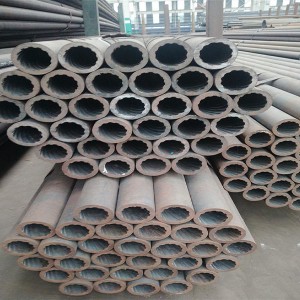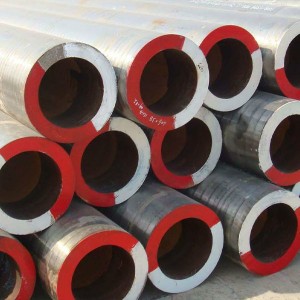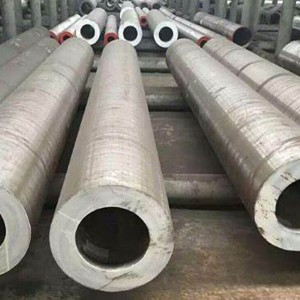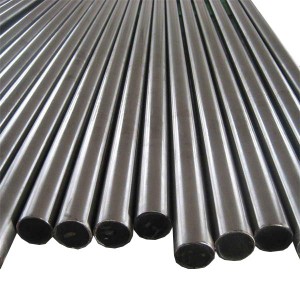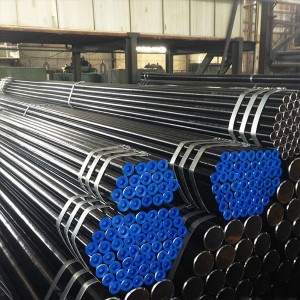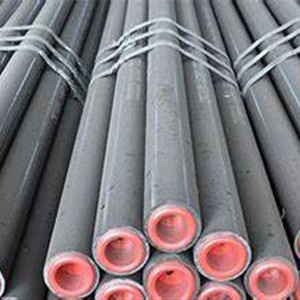Pearlite Heat-Resistant 12CR 1movg High Pressure Alloy Tube
The matrix is a low-alloy heat-resistant steel with a pearlite or bainite structure. There are mainly chromium-molybdenum and chromium-molybdenum-vanadium series. Later, multiple (such as chromium, tungsten, molybdenum, vanadium, titanium, boron, etc.) composite alloyed steel grades have been developed, and the durability and service temperature of the steel have gradually increased. But generally the total amount of alloying elements is at most about 5%, and its structure includes bainitic steel in addition to pearlite. This kind of steel has good high temperature creep strength and process performance at 450~620℃, and has good thermal conductivity, low expansion coefficient and low price. It is widely used to make various heat-resistant structural materials in the range of 450~620℃. Such as boiler steel pipes for power stations, steam turbine impellers, rotors, fasteners, high-pressure vessels for oil refining and chemical industries, waste heat boilers, heating furnace tubes and heat exchanger tubes, etc.
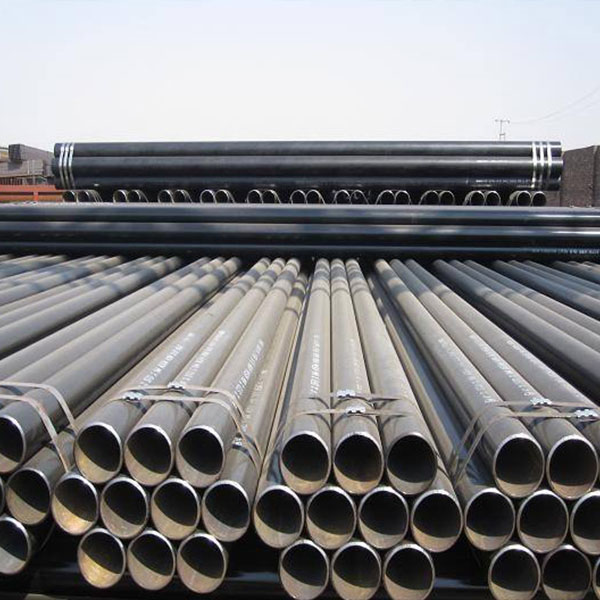
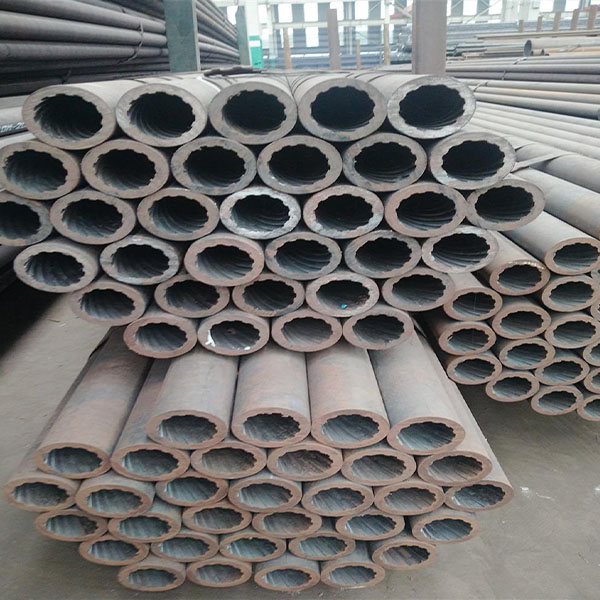
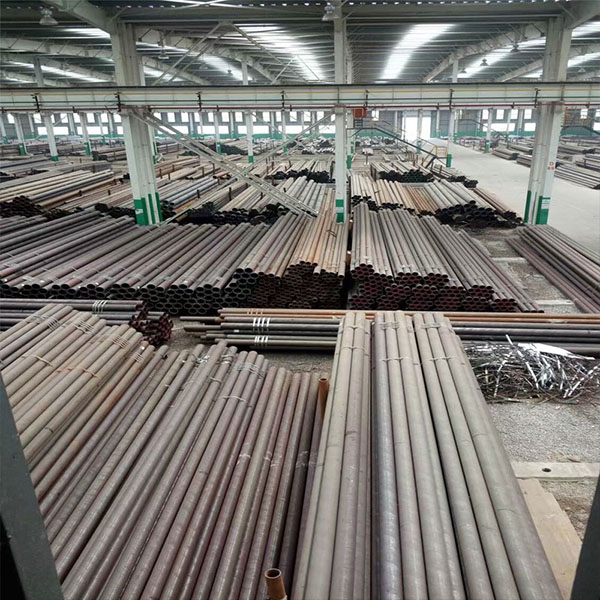
[1] Steel for low-alloy heat-resistant steel pipes.
Mainly used as boiler water walls, superheaters, reheaters, economizers, headers and steam pipes, as well as heat exchanger tubes for petrochemical and nuclear energy. The material is required to have a high creep limit, long-lasting strength and long-lasting plasticity, good oxidation resistance and corrosion resistance, sufficient structural stability and good weldability and hot and cold processing properties. The designed service life is up to 200,000 hours. The main brands in China are 12CrMo, 15CrMo, 12Cr2Mo, 12CrlMoVG high-pressure alloy tubes, and 12Cr2MoWVTiB, which are used in the range of 480~620℃. Normalizing and tempering are generally used for heat treatment.
[2] Steel for high-pressure vessel plates.
In petrochemical industry, coal gasification, nuclear power and power stations, low-alloy heat-resistant steel plates are widely used to make pressure vessels. The main brands in China are 15CrMoG high-pressure alloy pipes (1.25Cr-O.5Mo), 12Cr2Mo (2.25Cr-1Mo) and 12Cr1MoV, etc. For example, hot-wall hydrogenation reactors mostly use 2.25Cr-1Mo) steel plates (25~150mm). ), because the equipment has been working under the conditions of high temperature, high pressure and hydrogen resistance for a long time, while considering the prevention of embrittlement at 475°C, the material is required to have high purity, and the sulfur and phosphorus are expected to be less than 0.01% and the lowest possible tin, Harmful elements such as antimony and arsenic require electric furnace smelting and external refining.
[3]Steel for fasteners.
Fastener steel is a key material that plays a role in the connection of steam turbines, boilers and other high-pressure container equipment. It requires sufficient yield limit, high relaxation stability, good long-lasting plasticity and small long-lasting notch sensitivity. Oxidation resistance and good cutting performance. The main brands in China are 25Cr2Mo, 25Cr2MoV, 25Cr2Mo1V, 20Cr1M01VNbTiB, etc., which can be used in the range of 500~570℃ respectively. These grades are generally used after quenching and tempering.
[4] Steel for rotor (spindle, impeller).
The main shaft, impeller and integral forged rotor are one of the key components of the steam turbine. The material is required to have good comprehensive mechanical properties, fracture toughness, high creep resistance and endurance strength, and good thermal fatigue resistance. Commonly used brands of spindle and impeller in China are 35CrMo, 35CrMoV, 27Cr2Mo1V, 12Cr3MoWV, etc. The gas turbine rotor is forged from 20Cr3MoWV steel. Using quenching and tempering treatment. For large forgings such as forged rotors and impellers, in order to fully dissolve vanadium carbide and improve plasticity and toughness, a normalizing pretreatment can be carried out before quenching, or a heat treatment process of two normalizing and tempering can be used.
[5] 1Cr5Mo and Cr6SiMo steel.
These two grades have the highest alloying elements in the pearlitic heat-resistant steel. They have good heat resistance and corrosion resistance in petroleum media. They are widely used in the manufacture of pipelines and vessels for petroleum distillation equipment, heating furnace tubes and heat Exchangers, etc., are also used as hot stamping dies, fuel pumps, valves, boiler hangers and other parts. Usually the use temperature is below 650℃. Since this steel is air hardened steel, the weld seam has high hardness and poor plasticity, so it should be slowly cooled and annealed after welding.
Hot rolling (extruded seamless steel tube): round tube billet → heating → piercing → three-roll cross rolling, continuous rolling or extrusion → tube removal → sizing (or reducing) → cooling → billet tube → straightening → water pressure Test (or flaw detection) → mark → warehousing.
Cold drawn (rolled) seamless steel pipe: round tube billet → heating → piercing → heading → annealing → pickling → oiling (copper plating) → multi-pass cold drawing (cold rolling) → billet tube → heat treatment → straightening → Water pressure test (flaw detection) → mark → warehousing.
GB/T8162-2008 (Seamless steel pipe for structure). Mainly used for general structure and mechanical structure. Its representative materials (brands): carbon steel 20, 45 steel; alloy steel Q345, 20Cr, 40Cr, 20CrMo, 30-35CrMo, 42CrMo, etc.
GB/T8163-2008 (Seamless steel pipe for conveying fluid). Mainly used in engineering and large-scale equipment to transport fluid pipelines. The representative material (brand) is 20, Q345, etc.
GB3087-2008 (Seamless steel tubes for low and medium pressure boilers). Mainly used in industrial boilers and domestic boilers to transport low and medium pressure fluid pipelines. Representative materials are 10 and 20 steel.
GB5310-2008 (Seamless steel tubes for high-pressure boilers). Mainly used for high-temperature and high-pressure conveying fluid headers and pipelines on boilers in power stations and nuclear power plants. Representative materials are 20G, 12Cr1MoVG, 15CrMoG, etc.
GB5312-1999 (Carbon steel and carbon-manganese steel seamless steel pipes for ships). Mainly used for I and II pressure pipes for marine boilers and superheaters. Representative materials are 360, 410, 460 steel grades, etc.
GB6479-2000 (Seamless steel pipes for high-pressure fertilizer equipment). Mainly used for conveying high temperature and high pressure fluid pipelines on fertilizer equipment. Representative materials are 20, 16Mn, 12CrMo, 12Cr2Mo, etc.
GB9948-2006 (Seamless steel pipe for petroleum cracking). Mainly used in boilers, heat exchangers and fluid pipelines of petroleum smelters. Its representative materials are 20, 12CrMo, 1Cr5Mo, 1Cr19Ni11Nb, etc.
GB18248-2000 (Seamless steel tubes for gas cylinders). Mainly used to make various gas and hydraulic cylinders. Its representative materials are 37Mn, 34Mn2V, 35CrMo, etc.
GB/T17396-1998 (Hot-rolled seamless steel pipes for hydraulic props). Mainly used to make coal mine hydraulic supports, cylinders and columns, and other hydraulic cylinders and columns. Its representative materials are 20, 45, 27SiMn and so on.
GB3093-1986 (High-pressure seamless steel pipes for diesel engines). Mainly used for high pressure oil pipe of diesel engine injection system. The steel pipe is generally cold drawn, and its representative material is 20A.
GB/T3639-1983 (cold drawn or cold-rolled precision seamless steel pipe). It is mainly used for steel pipes used in mechanical structures and carbon pressure equipment that require high dimensional accuracy and good surface finish. Its representative materials are 20, 45 steel, etc.
GB/T3094-1986 (cold drawn seamless steel pipe special-shaped steel pipe). It is mainly used to make various structural parts and parts, and its materials are high-quality carbon structural steel and low-alloy structural steel.
GB/T8713-1988 (Precision inner diameter seamless steel pipe for hydraulic and pneumatic cylinders). It is mainly used to make cold drawn or cold rolled seamless steel pipes with precise inner diameters for hydraulic and pneumatic cylinders. Its representative materials are 20, 45 steel, etc.
GB13296-1991 (Stainless steel seamless steel tubes for boilers and heat exchangers). Mainly used in boilers, superheaters, heat exchangers, condensers, catalytic tubes, etc. of chemical enterprises. Used high-temperature, high-pressure, corrosion-resistant steel pipes. Its representative materials are 0Cr18Ni9, 1Cr18Ni9Ti, 0Cr18Ni12Mo2Ti, etc.
GB/T14975-1994 (Stainless steel seamless steel pipe for structure). It is mainly used for general structure (hotel and restaurant decoration) and mechanical structure of chemical enterprises, which are resistant to atmospheric and acid corrosion and have certain strength steel pipes. Its representative materials are 0-3Cr13, 0Cr18Ni9, 1Cr18Ni9Ti, 0Cr18Ni12Mo2Ti, etc.
GB/T14976-1994 (Stainless steel seamless steel pipe for fluid transportation). Mainly used for pipelines that transport corrosive media. Representative materials are 0Cr13, 0Cr18Ni9, 1Cr18Ni9Ti, 0Cr17Ni12Mo2, 0Cr18Ni12Mo2Ti, etc.
YB/T5035-1993 (Seamless steel pipes for automobile axle casings). It is mainly used to make high-quality carbon structural steel and alloy structural steel hot-rolled seamless steel pipes for automobile half-axle sleeves and drive axle axle tubes. Its representative materials are 45, 45Mn2, 40Cr, 20CrNi3A, etc.
API SPEC5CT-1999 (Casing and Tubing Specification), is compiled and issued by the American Petroleum Institute (American Petreleum Instiute, referred to as "API") and used in all parts of the world. Among them: Casing: the pipe that extends from the ground surface into the well and serves as the lining of the well wall. The pipes are connected by couplings. The main materials are steel grades such as J55, N80, and P110, as well as steel grades such as C90 and T95 that are resistant to hydrogen sulfide corrosion. Its low-grade steel (J55, N80) can be welded steel pipe. Tubing: The pipe inserted into the casing from the ground surface to the oil layer. The pipes are connected by couplings or integrally. The role of the pumping unit is to transport the oil from the oil layer to the ground through the oil pipe. The main materials are J55, N80, P110, and C90, which is resistant to hydrogen sulfide corrosion, compiled and issued by the American Petroleum Institute, and are used all over the world.
